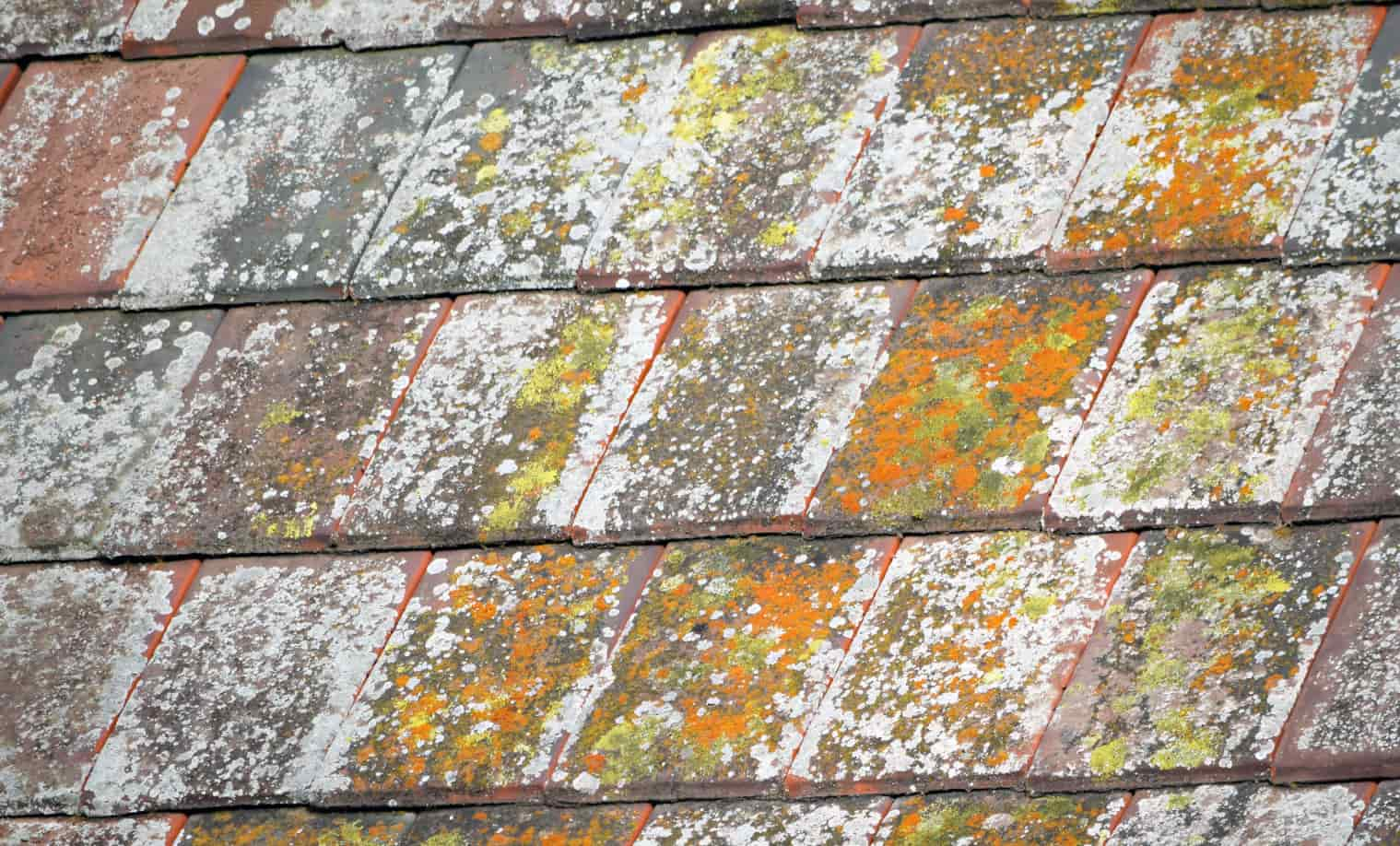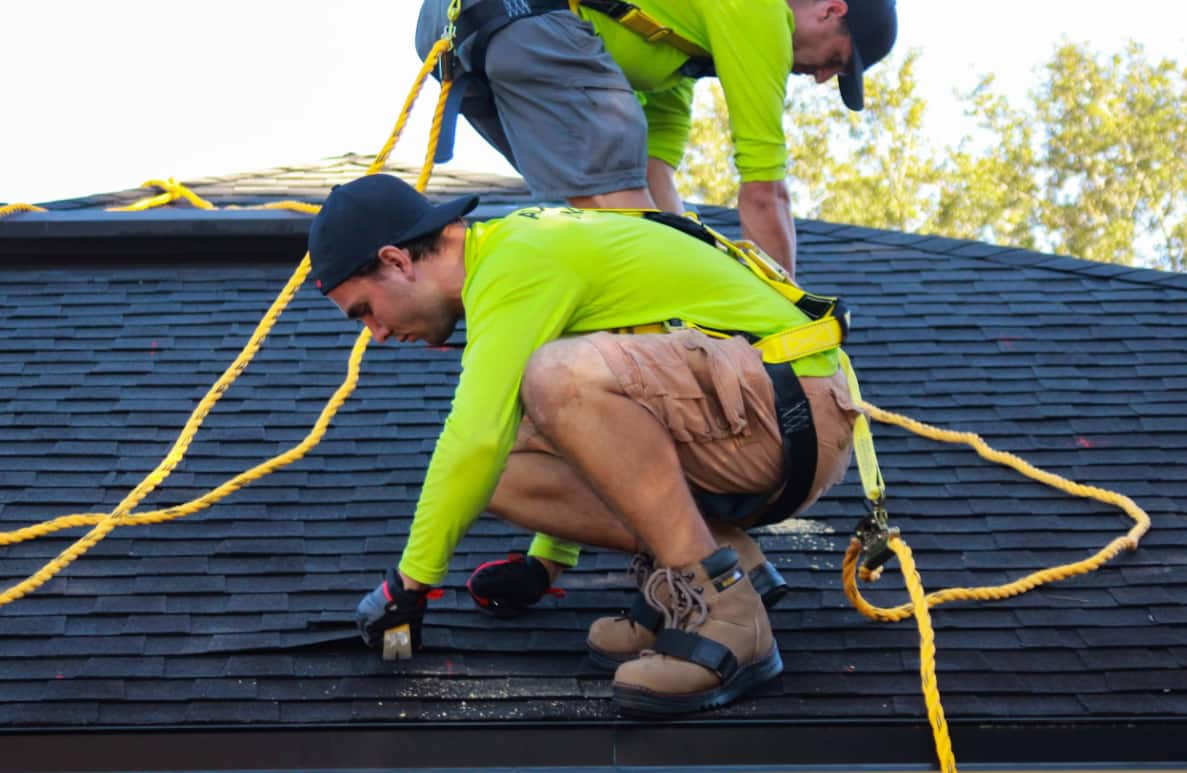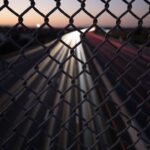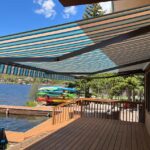When you glance up at your roof, do you see mysterious patches that look like a cross between moss and a paint splash? That’s likely lichen, a resilient organism that can significantly impact your roof’s health.
While these growths might seem harmless at first, they’re quite clever survival machines that can slowly compromise your home’s first line of defense against the elements.
Think of lichen as nature’s perfect roommates – fungi and algae living together in a mutually beneficial relationship.
But when these roommates decide to crash on your roof, they can overstay their welcome and cause some serious damage.
Understanding what you’re dealing with is crucial for protecting what’s likely your biggest investment – your home.
How to Remove Lichen on Roof Shingles?

In this comprehensive guide, we’ll walk through everything you need to know about roof lichen – from identification to removal, and most importantly, prevention.
Whether you’re a first-time homeowner or a seasoned property manager, this information will help you make smart decisions about protecting your roof.
What Is Lichen? Understanding Your Unwanted Roof Guest
Let’s break down this fascinating but problematic organism:
Basic Components:
- Fungi: Provides structure and protection
- Algae: Creates food through photosynthesis
- Symbiotic relationship: Each helps the other survive
- Adaptive capabilities: Can survive extreme conditions
Visual Identification Guide:
| Characteristic | Description | Warning Signs |
|---|---|---|
| Color | Pale green to gray-blue | Darkening indicates maturity |
| Texture | Crusty to leafy | More texture means deeper roots |
| Pattern | Circular to irregular | Rapid spreading patterns need attention |
| Size | Spot-sized to large patches | Growth rate indicates health risk |
Types on Roofing:
- Crustose: Flat and tightly bound
- Foliose: Leaf-like with raised edges
- Fruticose: Branching and bush-like
- Composite: Multiple types growing together
The Hidden Dangers of Roof Lichen
Understanding the full scope of lichen damage helps prioritize treatment:
Immediate Physical Impact:
- Shingle degradation
- Granule displacement
- Surface etching
- Moisture retention
Progressive Damage Stages:
| Stage | Timeline | Visible Signs | Hidden Damage |
|---|---|---|---|
| Early | 0-6 months | Light discoloration | Surface bonding |
| Developing | 6-18 months | Clear patches | Material degradation |
| Established | 18+ months | Raised growth | Structural compromise |
| Advanced | 3+ years | Multiple colonies | System failure risk |
Chemical Effects:
- Produces organic acids
- Creates chemical erosion
- Accelerates weathering
- Compromises protective coatings
How Lichen Establishes and Spreads?
Understanding the growth process is key to prevention:
Initial Colonization:
- Spore landing: Wind-carried reproductive units
- Surface attachment: Chemical and physical bonding
- Partnership formation: Algae and fungi unite
- Growth initiation: Begins expanding outward
Growth Requirements:
| Factor | Optimal Conditions | Prevention Strategy |
|---|---|---|
| Moisture | Regular wetness | Improve drainage |
| Light | Partial shade | Remove overhanging branches |
| Temperature | 40-80°F | Can’t control but affects growth rate |
| Surface | Rough texture | Maintain roof coating |
Spread Patterns:
- Concentric growth
- Patch formation
- Colony merging
- Seasonal expansion
Identifying High-Risk Areas
Know where to look for early signs of lichen:
Common Problem Spots:
- North-facing sections
- Shaded areas
- Roof valleys
- Near chimneys
- Under tree canopies
Environmental Risk Factors:
| Factor | Risk Level | Impact |
|---|---|---|
| Tree Coverage | High | Shade and debris |
| Poor Ventilation | Very High | Moisture retention |
| Age of Roof | Moderate | Surface vulnerability |
| Climate Zone | Variable | Growth conditions |
Professional Removal Methods
When it’s time to call in the experts:
Professional Treatment Options:
- Chemical cleaning
- Soft washing
- Biocide application
- Preventive coating
Professional Process Steps:
- Inspection and assessment
- Treatment selection
- Surface Preparation
- Application process
- Rinse and neutralization
- Preventive measures
DIY Removal Solutions
Safe and effective methods for homeowner intervention:
Oxygen Bleach Method
Materials Needed:
- Oxygen-based bleach
- Soft-bristled brush
- Garden sprayer
- Safety equipment
- Clean water
Application Process:
- Mix solution according to instructions
- Apply on a cloudy day
- Let sit for 15 minutes
- Gentle agitation if needed
- Thorough rinsing
- Repeat if necessary
Eco-Friendly Solution Method
Natural Solutions:
- Vinegar mixture
- Baking soda paste
- Copper sulfate
- Natural cleaners
Application Steps:
- Choose appropriate solution
- Test on a small area
- Apply gently
- Monitor reaction
- Rinse thoroughly
- Assess results
Prevention Strategies
Keep lichen from returning:
Physical Prevention:
- Install copper or zinc strips
- Improve ventilation
- Maintain proper drainage
- Regular gutter cleaning
- Tree trimming
Maintenance Schedule:
| Task | Frequency | Importance |
|---|---|---|
| Visual Inspection | Monthly | Essential |
| Professional Inspection | Annually | Recommended |
| Gutter Cleaning | Quarterly | Critical |
| Tree Trimming | Bi-annually | Important |
| Roof Cleaning | As needed | Situational |
Professional vs DIY Treatment
Making the right choice for your situation:
When to DIY:
- Small areas affected
- Easy roof access
- Minimal slope
- Recent growth
- Good physical ability
When to Call Professionals:
- Extensive growth
- Steep slopes
- Multiple stories
- Significant damage
- Safety concerns
Cost Considerations
Understanding the financial impact:
Treatment Costs:
| Method | Average Cost | Benefits | Limitations |
|---|---|---|---|
| DIY Cleaning | $50-200 | Cost-effective | Time-consuming |
| Professional Cleaning | $500-1000 | Thorough results | Higher cost |
| Prevention Systems | $200-600 | Long-term solution | Initial investment |
| Roof Replacement | $5000+ | Complete solution | Last resort |
Environmental Considerations
Being eco-conscious in lichen removal:
Eco-Friendly Approaches:
- Use biodegradable cleaners
- Protect surrounding plants
- Consider water runoff
- Choose gentle methods
- Time treatments appropriately
FAQs
- Q: How quickly does lichen damage roofing?
A: While visible damage may take years, the deterioration process begins as soon as lichen establishes itself.
- Q: Can lichen grow back after removal?
A: Yes, without proper preventive measures, lichen can return within 6-12 months.
- Q: Is lichen harmful to my health?
A: While roof lichen isn’t directly harmful, it can contribute to indoor air quality issues if it leads to roof leaks and mold growth.
- Q: Will insurance cover lichen damage?
A: Most insurance policies consider lichen damage preventable maintenance and don’t cover it directly.
- Q: How can I tell if lichen has damaged my roof?
A: Look for granule loss, lifted shingles, and dark spots under the lichen growth.
Safety Considerations
Important safety measures for lichen removal:
Personal Protection:
- Non-slip shoes
- Safety harness
- Eye protection
- Breathing protection
- Chemical-resistant gloves
Working Conditions:
- Choose appropriate weather
- Ensure proper lighting
- Use stable ladders
- Maintain safe footing
- Have assistance available
Also Check:
Conclusion:
Dealing with lichen on your roof requires a balanced approach of understanding, prevention, and appropriate action. Remember these key points:
Essential Takeaways:
- Regular inspection prevents major issues
- Early intervention saves money
- Professional help is often worth the investment
- Prevention is cheaper than cure
- Safety first in all situations
The presence of lichen on your roof isn’t just a cosmetic issue – it’s an early warning sign that requires attention.
By understanding what you’re dealing with and taking appropriate action, you can protect your roof and maintain your home’s value.
Whether you choose DIY methods or professional services, the important thing is to address lichen growth promptly and maintain regular roof care.
With proper attention and maintenance, you can keep your roof lichen-free and function properly for years to come.
Remember that your roof is a crucial investment in your home’s protection.
Taking care of it properly, including managing lichen growth, will help ensure it continues to protect your home effectively throughout its expected lifespan.
Stay vigilant, act promptly, and don’t hesitate to seek professional help when needed.











